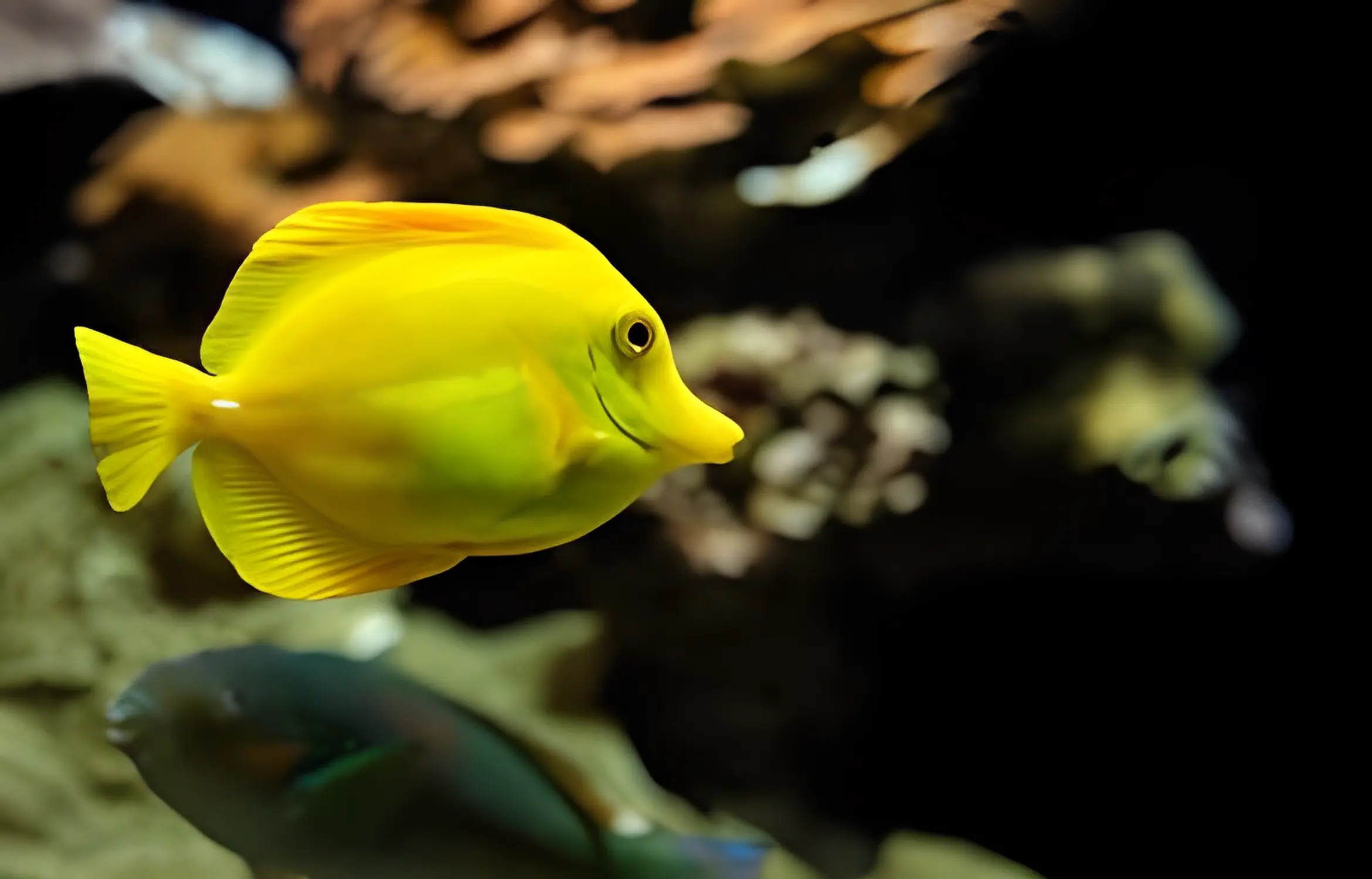Dive into the fascinating world of marine invertebrates and discover a mesmerizing array of creatures that inhabit the ocean depths. From the graceful movements of starfish to the delicate beauty of anemones, these popular marine invertebrates captivate both underwater enthusiasts and casual observers alike.
Importance of Marine Invertebrates in the Marine Ecosystem
Marine invertebrates play a crucial role in maintaining the balance of marine ecosystems. These organisms, which lack a backbone, are incredibly diverse and occupy various niches in the ocean. They serve as an essential food source for many marine creatures, including fish, sea turtles, and birds. Additionally, marine invertebrates help to recycle nutrients and maintain water quality, contributing to the overall health of the marine environment.
Different Types of Marine Invertebrates – Starfish, Anemones, Jellyfish, and More
The world of marine invertebrates is vast and encompasses a wide range of species. Let’s explore some of the most popular ones:
Starfish
Starfish, also known as sea stars, are instantly recognizable with their unique star-shaped bodies. These fascinating creatures come in a variety of colors, sizes, and patterns, making them a favorite among nature enthusiasts. Starfish are well-adapted to their marine environment, with a network of tube feet that allow them to move and cling onto surfaces. They possess incredible regenerative abilities, capable of regrowing lost limbs.
Anemones
Anemones are known for their striking appearance and vibrant colors. These stationary creatures are often found attached to rocks or coral reefs, swaying gently in the current. Anemones have specialized cells called nematocysts that contain venomous harpoon-like structures, which they use for defense and to capture prey. They form a symbiotic relationship with clownfish, providing them with protection while benefiting from the clownfish’s leftovers.
Jellyfish
Jellyfish, with their gelatinous bodies and graceful movements, are mesmerizing to watch. These translucent creatures have stinging tentacles that they use to immobilize their prey. While some jellyfish species are harmless to humans, others can deliver painful stings. Despite their delicate appearance, jellyfish have survived for millions of years and have adapted to various marine environments.
Characteristics and Adaptations of Starfish
Starfish possess several unique characteristics and adaptations that allow them to thrive in their marine habitats. Firstly, their radial symmetry allows them to move in any direction, making them highly maneuverable. Starfish also have an incredible ability to regenerate lost body parts, including arms and even their entire body in some cases. This remarkable regeneration process enables them to recover from injuries and predation.
Another fascinating adaptation of starfish is their water vascular system. This system, composed of a network of fluid-filled canals, aids in movement, feeding, and respiration. It also enables starfish to grasp onto prey and pry open shells with their tube feet. Additionally, starfish have a unique digestive system, which allows them to evert their stomachs out of their bodies to digest prey outside their mouths.
Interesting Facts about Anemones
Anemones are not only visually stunning but also possess some intriguing characteristics. Here are a few interesting facts about these captivating creatures:
- Anemones can reproduce both sexually and asexually. They can release eggs and sperm into the water, where fertilization occurs, or they can reproduce by budding, forming genetically identical clones.
- Anemones have a symbiotic relationship with photosynthetic algae called zooxanthellae. These algae live within the tissues of the anemone and provide it with nutrients through photosynthesis. In return, the anemone offers protection and a stable environment for the algae.
- Some anemones possess biofluorescent proteins, which allow them to emit colorful light. This phenomenon is thought to play a role in attracting prey or communicating with other anemones.
- Anemones can rapidly retract their tentacles when threatened, pulling them into their bodies for protection. This defense mechanism helps them avoid predators and minimize damage.
Life Cycle and Reproduction of Marine Invertebrates
The life cycles and reproductive strategies of marine invertebrates vary greatly across species. While some species reproduce sexually, others reproduce asexually. For sexually reproducing marine invertebrates, the process typically involves the release of eggs and sperm into the water, where fertilization occurs. This method allows for genetic diversity and variation among offspring.
Asexual reproduction, on the other hand, involves the production of offspring without the need for fertilization. This can occur through various methods, including budding, fragmentation, or parthenogenesis. Asexual reproduction allows for rapid population growth and colonization in favorable environments.
Threats and Conservation Efforts for Marine Invertebrates
Marine invertebrates face numerous threats that endanger their survival and the overall health of marine ecosystems. Habitat destruction, pollution, overfishing, and climate change all contribute to the decline of these creatures. The destruction of coral reefs, for example, directly impacts the survival of anemones and other associated marine invertebrates.
Conservation efforts aim to protect and restore marine invertebrate populations and their habitats. These efforts include the establishment of marine protected areas, implementation of sustainable fishing practices, and the reduction of pollution. Public awareness and education also play a vital role in promoting the conservation of marine invertebrates and their ecosystems.
Popular Marine Invertebrates in Aquariums
Many marine invertebrates are popular choices for aquarium enthusiasts. Their vibrant colors, unique shapes, and interesting behaviors make them captivating additions to home aquariums. Some commonly kept marine invertebrates include anemones, starfish, coral, shrimp, and crabs.
However, it is important to note that marine invertebrates have specific care requirements that must be met to ensure their health and well-being. Proper water quality, appropriate diet, and suitable tank conditions are essential for their survival. It is crucial to research and understand the needs of each species before introducing them to an aquarium.
Tips for Caring for Marine Invertebrates in Captivity
Caring for marine invertebrates in captivity can be a rewarding experience if done correctly. Here are some tips to help you provide the best care for your marine invertebrates:
- Research the specific needs of the marine invertebrates you plan to keep. Each species has unique requirements regarding water temperature, salinity, lighting, and tank size.
- Create a suitable habitat by mimicking their natural environment as closely as possible. Provide appropriate substrate, hiding places, and live rock for them to explore.
- Ensure proper water quality by regularly testing and maintaining appropriate levels of pH, salinity, and nutrient balance. Regular water changes are also essential for maintaining a healthy environment.
- Feed your marine invertebrates a varied diet that includes both live and frozen foods. Research the specific dietary needs of each species and provide them with the appropriate nutrition.
- Monitor their behavior and health closely. Look out for signs of stress, disease, or aggression. Address any issues promptly to prevent further complications.
Conclusion
The world of marine invertebrates is a captivating one, filled with creatures that inspire awe and wonder. From the graceful movements of starfish to the vibrant beauty of anemones, these popular marine invertebrates continue to fascinate both scientists and enthusiasts alike. By understanding their biology, behavior, and ecological importance, we can appreciate and protect these incredible creatures for generations to come. So, dive into the mesmerizing world of marine invertebrates and discover the secrets that lie beneath the ocean’s surface.

